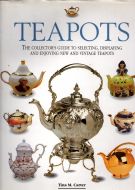Cutting Edge Japanese Swords in the British Museum
| Author(s) | Victor Harris | ||
| Editor | British Museum Press | Place | Londra |
| Year | 2004 | Pages | 160 |
| Measure | 22x29 (cm) | Illustration | ill. a colori e b/n n.t. - colors and b/w ills |
| Binding | bross. ill. a colori - paperback | Conservazione | Nuovo - New |
| Language | Inglese - English text | Weight | 900 (gr) |
| ISBN | 0714124192 | EAN-13 | 9780714124193 |
not available
In no other culture has the sword been developed to such a level of technological excellence and attained such a position of spiritual importance as in Japan. As a cutting weapon, the fully developed curved sword of the samurai is extremely effective. Complex traditional methods of forging, conducted according to the ancient precepts of reverence and cleanliness of the Shinto religion, impart these qualities to the swords. Countless varying hues and patterns of the crystalline structures of steel, which result from special methods of forging and heat treating, are visible on the surface of a finely polished blade.
In these textures lies an extraordinary and unique feature of the sword - the steel itself possesses an intrinsic beauty. The Japanese sword has been appreciated as an art object since its perfection some time during the tenth century AD. Fine swords have been more highly prized than lands or riches, those of superior quality being handed down from generation to generation. In fact, many well-documented swords, whose blades are signed by their makers, survive from nearly a thousand years ago. Recognizable features of the blades of hundreds of schools of sword-making have been punctiliously recorded, and the study of the sword is a guide to the flow of Japanese history. (T-CA)
Recommended books...





